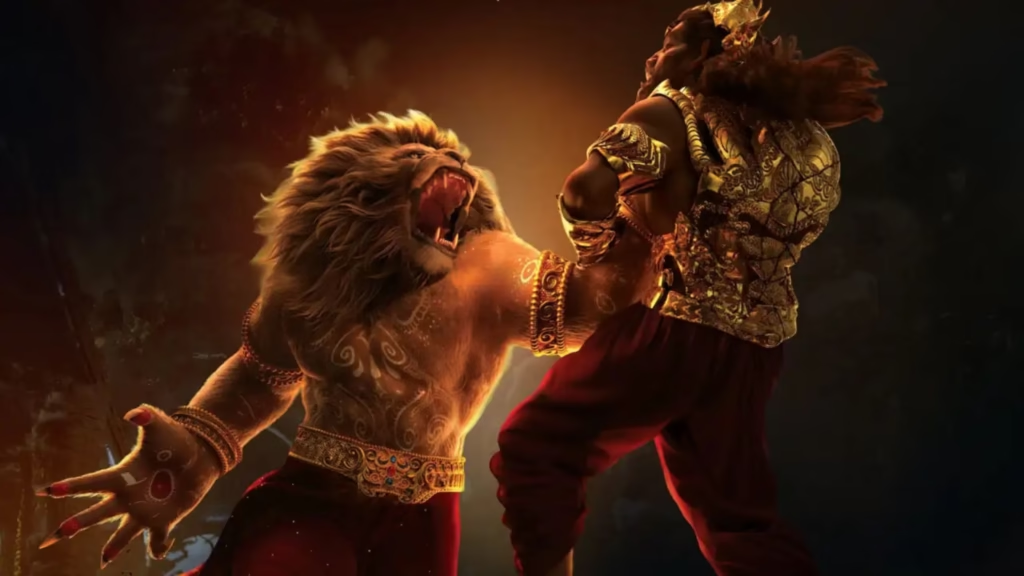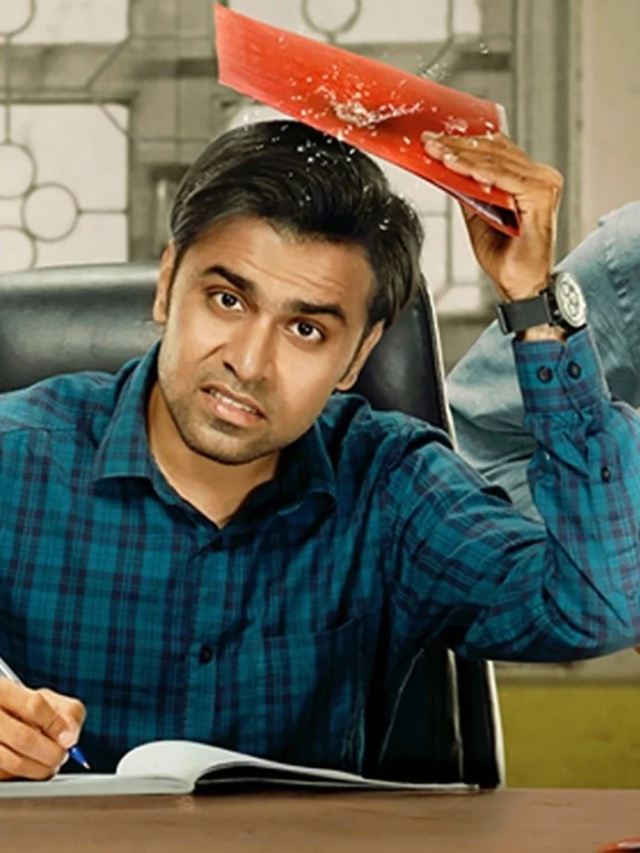
Indian cinema has long embraced mythology, but Mahavatar Narsimha marks a significant shift in how these timeless tales are told. Directed by Ashwin Kumar and produced by Kleem Productions in collaboration with Hombale Films, this ambitious animated film reimagines the fierce Narasimha avatar of Lord Vishnu through high-scale 3D animation. Released on July 25, 2025, the film is the first installment in the Mahavatar Cinematic Universe and has already made waves at the box office.
A Mythological Tale Retold with Visual Grandeur
The story of Mahavatar Narsimha draws from three revered Puranas—Vishnu Purana, Narasimha Purana, and Shrimad Bhagavata Purana. It begins with the origin of evil in the Satya Yuga, when Diti and sage Kashyapa defy divine law. Their union leads to the birth of demon brothers Hiranyaksha and Hiranyakashipu, who are trained by Shukracharya to challenge the cosmic order.
Hiranyaksha meets his end at the hands of Vishnu’s Varaha avatar, while Hiranyakashipu, empowered by a boon from Brahma, becomes nearly invincible. His reign of terror is eventually challenged by his own son, Prahlad, whose unwavering devotion to Lord Vishnu sets the stage for the dramatic arrival of Narasimha—the half-man, half-lion incarnation.
Mahavatar Narsimha Review: Strengths and Shortcomings
The film’s greatest strength lies in its visual storytelling. From celestial realms to intense demon battles, the animation brings a level of grandeur rarely seen in Indian cinema. The Varaha and Narasimha sequences are particularly awe-inspiring, showcasing divine energy with stunning detail.
However, while the visuals impress, the emotional depth of the narrative falls short. The screenplay and dialogues lack the intensity needed to fully engage viewers. Even the climactic arrival of Narasimha, though visually spectacular, feels underwhelming due to the absence of proper emotional buildup.
Some character designs—especially Diti, Bhoodevi, and certain sages—lean toward Western caricatures, which may not resonate with audiences expecting authentic Indian mythological representations. The songs, though well-intentioned, fail to leave a lasting impact, and certain frames could benefit from more refinement.
Prahlad’s Devotion: The Emotional Core of the Film
Despite its shortcomings, Mahavatar Narsimha succeeds in portraying Prahlad’s unwavering faith with sincerity. His character becomes the emotional anchor of the film, especially for younger viewers. His resistance against tyranny and his spiritual clarity serve as a powerful symbol of devotion and courage.
Sam C S’s background score deserves special mention. It subtly enhances the emotional tone of the film, especially during key moments of divine intervention and spiritual reflection.
Mahavatar Narsimha Box Office Collection: A Record-Breaking Start
The film’s performance at the box office has been nothing short of impressive. According to industry tracker Sacnilk, Mahavatar Narsimha earned ₹3.31 crore on Day 4, bringing its total to ₹19.16 crore. Despite a slow start on Friday with ₹1.75 crore, the film saw a massive surge over the weekend:
- Saturday: ₹4.6 crore
- Sunday: ₹9.5 crore
- Monday: ₹3.31 crore
This growth has made Mahavatar Narsimha the highest-grossing Indian animated film to date. The film’s multilingual release in Telugu, Kannada, Hindi, Tamil, and Malayalam—available in both 2D and 3D formats—has helped it reach a wider audience.
Occupancy Highlights Across Languages
- Kannada 3D: 61.91%
- Telugu 3D: 52.71%
- Tamil 3D: 43.17%
- Hindi 3D: 27.12%
- Hindi 2D: 21.14%
The Hindi version, in particular, has emerged as the front-runner, contributing significantly to the overall earnings. Trade analyst Taran Adarsh noted the film’s solid growth and increased show count, calling it a “divine experience” and praising its cinematic devotion.
A New Era for Indian Animation
Mahavatar Narsimha may not match the polish of global animation giants like Pixar or DreamWorks, but it’s a homegrown triumph in ambition and cultural rootedness. It proves that Indian animated storytelling can be intense, introspective, and spiritually resonant.
The film avoids gimmicks and instead commits to emotional sincerity. Hiranyakashipu isn’t just a villain—he’s a man consumed by ego, making his downfall a moral reckoning. Narasimha’s ferocity isn’t just spectacle; it’s cosmic justice.
Final Verdict: Worth Watching for Its Vision and Heart
While Mahavatar Narsimha has its flaws—particularly in pacing and character design—it’s a sincere and ambitious attempt to bring mythology to life through animation. For families, especially those with children, it offers a meaningful introduction to Hindu epics. For mythology enthusiasts, it’s a visual treat that honors the spirit of Sanatana Dharma.
As the first installment in a planned ten-part cinematic universe, Mahavatar Narsimha lays a strong foundation. Future entries like Mahavatar Parshuram and Mahavatar Raghunandan will hopefully build on this momentum with improved technical finesse and deeper storytelling.

















